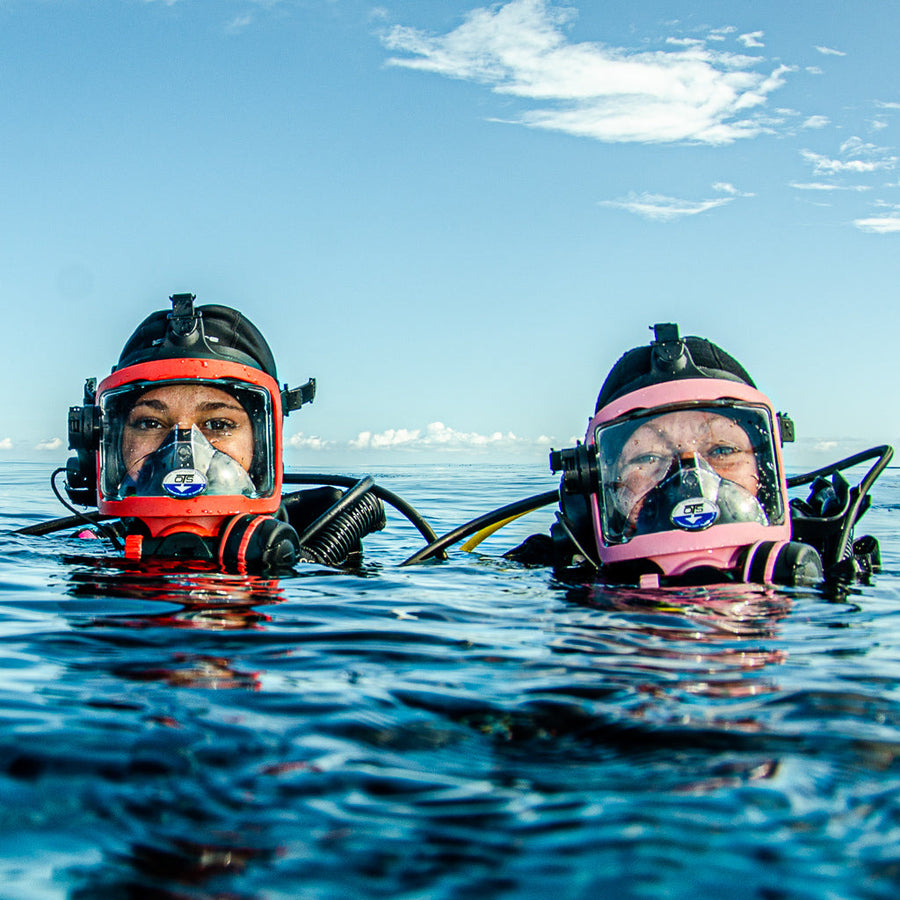Exploring the Depths: Essential Gear for Scuba Diving
Posted by Philip DePalo on

Diving into the underwater world is a thrilling experience that offers a glimpse into a realm filled with wonder and beauty. Whether you're a seasoned diver or just starting out, having the right gear is crucial for a safe and enjoyable diving adventure. From breathing apparatus to protective suits, here's a breakdown of the essential equipment you need to go diving:
1. Dive Mask: The dive mask is your window to the underwater world, providing you with clear vision while submerged. Look for a mask that fits comfortably and creates a good seal around your face to prevent water from entering. Anti-fog lenses are also a plus, ensuring that your view remains clear throughout the dive.
2. Snorkel: While not always necessary, a snorkel can be handy for conserving air and observing marine life at the surface without having to use your scuba regulator. Choose a snorkel with a comfortable mouthpiece and a purge valve for easy clearing.
3. Scuba Fins: Fins are essential for efficient movement through the water. They come in various styles, including open-heel and full-foot designs. Make sure your fins fit snugly but comfortably and provide enough propulsion for your diving needs.
4. Wetsuit or Drysuit: The choice between a wetsuit and a drysuit depends on the water temperature of your dive location. Wetsuits provide insulation by trapping a thin layer of water against your skin, while drysuits keep you completely dry by sealing you off from the water. Choose the appropriate thickness based on the water temperature to stay comfortable throughout your dive.
5. Buoyancy Control Device (BCD): The BCD allows you to control your buoyancy underwater by adding or releasing air from the jacket. It also provides attachment points for your tank, regulator, and other accessories. Look for a BCD with adequate lift capacity and comfortable harness straps.
6. Regulator: The regulator is your lifeline underwater, providing you with a constant supply of air from the scuba tank. It consists of a first stage, a primary second stage, and often a backup or octopus regulator. Ensure your regulator is properly serviced and maintained for reliable performance.
7. Dive Computer: A dive computer is an essential piece of safety equipment that tracks your depth, bottom time, and decompression status during a dive. It allows you to dive more safely and efficiently by providing real-time information and alerts.
8. Dive Watch or Timing Device: Having a reliable timing device is crucial for monitoring your dive duration, especially if you're using dive tables for decompression calculations. A dive watch or digital timing device can help you keep track of time underwater accurately.
9. Weight System: Depending on your buoyancy needs, you may require additional weight to help you descend and maintain neutral buoyancy underwater. Choose a weight system that distributes the weight evenly and allows for quick release in case of emergency.
10. Dive Knife or Cutting Tool: A dive knife or cutting tool is essential for safety and practical purposes. It can be used to free yourself from entanglements, cut lines, or collect specimens. Make sure it's secured in a sheath and easily accessible during your dive.
11. Surface Signaling Devices: Surface signaling devices such as a whistle, surface marker buoy (SMB), or signaling mirror are essential for communication and safety while at the surface. These tools help you attract attention in case of emergency or signal your position to the boat or other divers.
12. Underwater Light: If you plan on diving in low-light conditions or exploring caves and wrecks, an underwater light is essential for illuminating your surroundings. Choose a dive light with sufficient brightness and battery life for your intended use.
Before each dive, ensure all your gear is properly assembled, checked, and functioning correctly. Proper maintenance and care of your equipment will not only enhance your diving experience but also contribute to your safety underwater. So, gear up, dive in, and explore the breathtaking world beneath the waves.
RECENT POSTS
Eastern Sports
Enter you email to receive 10% coupon immediately
